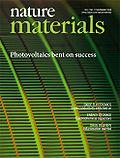There has been different issue arising with regards to the new 7 wonders of the world 2012. It is not yet finalized up to this date but 2 places were officially confirmed to be listed on the 7 wonders of the world 2012. The Jeju Island in South Korea andPuerto Princesa in the Philippines made it to the official list. Bernard Weber who is the founder-president for the New7Wonders said that Jeju Island beat the last competition by many hundreds of votes to be officially announced as one of the new 7 wonders of the world 2012.
Though some reacted that it is just patches of snow that covers the crater of Mount Halla which is located in Jeju Island, still it won the hearts of many voters. The contest consists of votes to measure the popularity of the places that is included in the nominees for the new 7 wonders of the world 2012. Criticism arises in terms of the process and lack of transparency of the criteria that is being used to select the finalist for the New7Wonders. But then, Jeju Island made its way from the criticism to be officially announced as one of the new 7 wonders of world 2012. Jeju Island proclaimed its beauty with its glorious beaches, mountains and stunning scenery that makes Koreans proud to call it as a World Heritage Site. Hawaii of Korea and Honeymoon Island are among the nicknames being called for this place.
New 7 Wonders of the World 2012 – Puerto Princesa Underground River
Puerto Princesa’s Underground River is one of the main tourist attractions in the Philippine island. Lonely Planet said that it is considered as one of the last frontier of the Philippines. There are concerns that arise on what the competition would bring to Puerto Princesa. Since it will be included in the new 7 wonders of the world 2012, it may attract more tourist and development in the area that can cause pollution. It may damage and make more harm to the place than preserve it. But if the competition’s main goal is to campaign for securing and preserving these natural resources, then it is a good motivation. At least, people are aware on which places should be protected and keep from environmental harm. Weber said that Philippines is taking seriously the New7Wonders of Nature because even Philippine President Aquino himself came out to support the Puerto Princesa campaign to be included in the official list of the new 7 wonders of the world 2012.
The other places that is awaiting confirmation to be included in the official list of the new 7 wonders of the world 2012 include Halong Bay in Vietnam, Indonesia’s Komodo National Park, Amazon Rain Forest, Table Top Mountain of South Africa, and Iguazu Falls which is located in the borders of Brazil and Argentina.
Don’t forget to visit Puerto Princesa’s Underground River, it is really a must see destination this summer.


